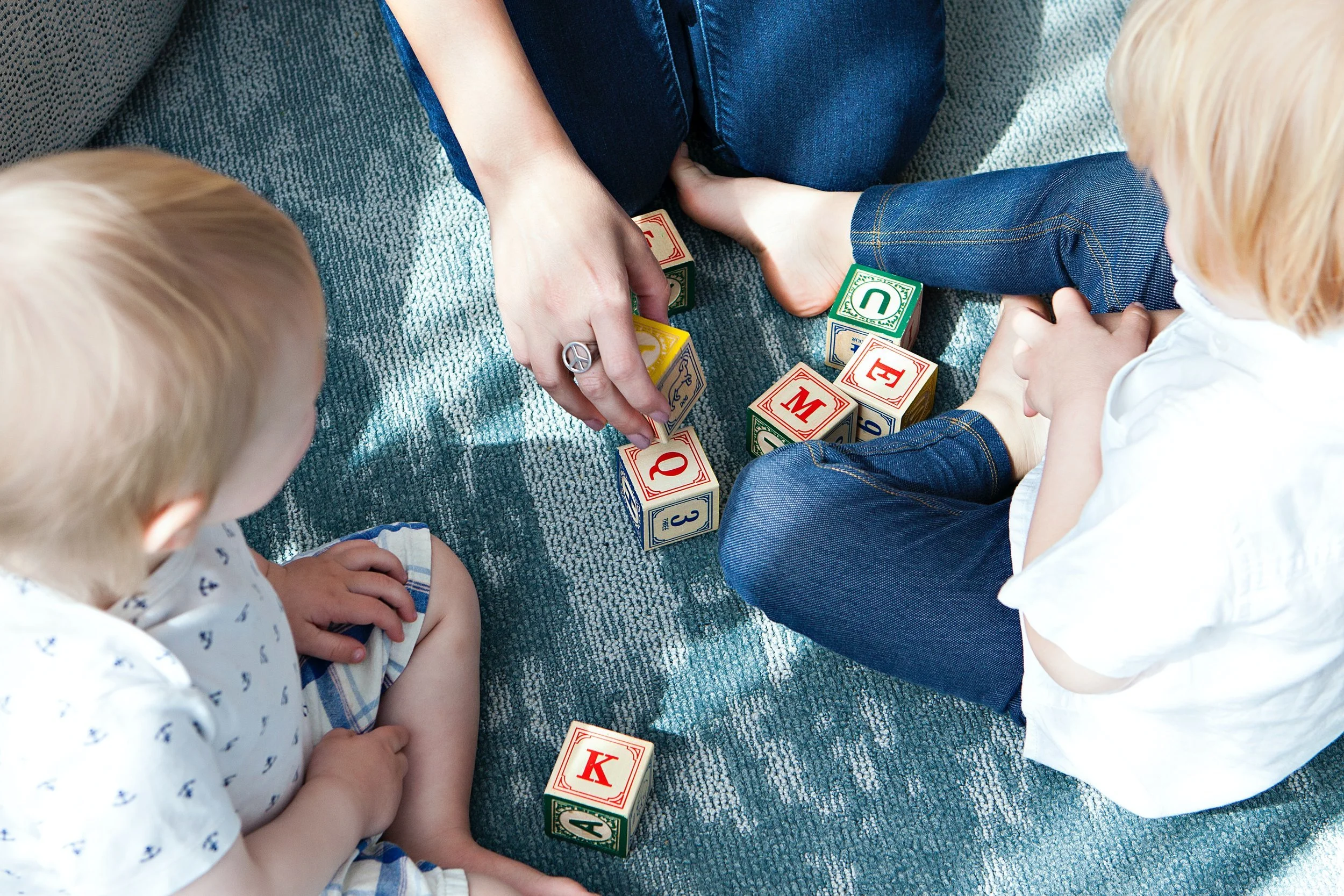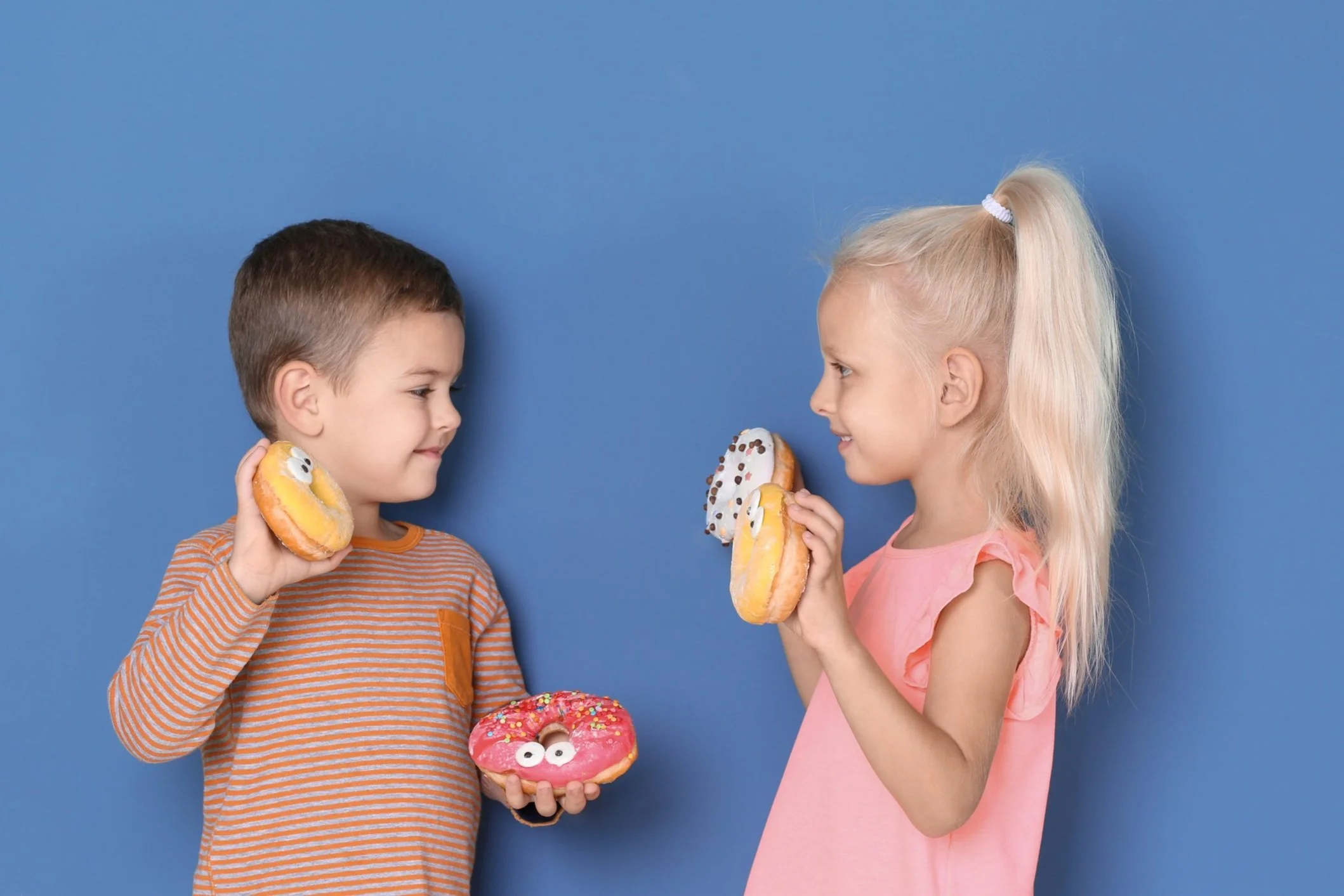How to: Language Development Tips and Tricks
We have had many blog posts recently giving the facts and research statistics about language development. But before everything starts to feel doom and gloom, know that there are very easy ways to help facilitate language development!
1
Ask one question at a time. It can be tempting to rephrase the question if your little one doesn’t answer right away and it can be easy to ask multiple questions without really realizing it (“What did you do today? Did you have fun?”). However, young children are still learning language and don’t process language as quickly as adults. While your spouse might be able to hold all the questions you ask and then answer all of them, toddlers are still thinking about the first question when the second one comes in. They then don’t know what is actually being expected of them! That leads to…
2
Provide wait time. After you ask a question, make sure you provide enough wait time for your child to respond before asking another question, rephrasing that question, or guessing at an answer. As mentioned previously, children are still developing language and need a little bit more time to understand what the question is and then find the words that they have in their vocabulary to respond.
3
Narrate everything. You might feel silly doing this, but just exposing your child to language is huge! For example, if you are in the grocery store with your child, talk about what you are doing (“Here we go! Let’s go get yummy fruits and veggies!”), what you see (“Oooo, I see apples! They are red {point} and yellow {point} and green {point}”), why you are putting an item in the basket (“Apples will be a yummy snack!”) , where you are going to go next (“Let’s go get milk!”), etc.
4
Expand your child’s language: Adding one or two more words to your child’s utterances will expose your child to more language but not in a way that is overwhelming (ex. child: “Dog”; adult: “A big dog” or “Doggie running”). Nouns develop first so adding verbs or adjectives are great additions to add meaning to your child’s language.
5
Simplify your language: Speak at a level your child can understand. This is usually just above their expressive language level. Thus, if your child is starting to combine 2 words together, talk to your child in 3-4 word utterances (“Doggie big” “He is big! Pet him gently.”)
6
Pair language with gestures or a visual. When possible pair your language with either a gesture, a demonstration (like showing how to pet an animal gently), or with a visual. If you are asking your child if they want something to drink, hold your hand as if you are drinking from a cup when you ask them. Or if you are providing options of what they can drink, hold each carton in your hand and then ask while holding that carton out.
About the Author
Janene Besch
Director/Speech-Language Pathologist
Janene Besch, née Martin, holds a Master’s degree in Speech Language and Hearing Sciences from San Diego State University and a Bachelor’s degree in Psychology from the University of California at San Diego. Janene is a member of the American Academy of Private Practice in Speech Pathology
Read more >
More Stories
Blog
What’s the Deal with Dyslexia?
Is your preschooler having difficulty with rhyming and learning letter sounds? Is your kindergartener getting frustrated while learning to read? It may be time to consult the literacy experts and dive into a discussion about dyslexia!
It’s All Connected: Language and Learning
Oh the pressure of parenthood. You are constantly told that EVERY decision you make will impact your child for the rest of their lives. Sounds scary right?! Well, what if I told you that you have an opportunity to gain information and take action to lay a foundation for lifelong learning?
Pets Are Paw-some Speech Buddies
We all love our pets. They are the backbone of our families and give us that soothing cuddle at the end of a long day. BUT have you ever thought about how pets can also contribute to your child’s speech and language development?
Engaging Minds: The Power of Sensory Bins.
Discover the magic of sensory bins for kids! Engage their senses, boost cognitive development, and enhance language skills through fun play. Create beach or zoo-themed bins and watch them learn and explore! Sensational summer awaits! Contact us for expert support.
Summer is a time of fun, sunshine, and opportunities for continued learning and exploration. For parents that may be less familiar with the educational impact of a long break, the “summer slide” is the term used to describe the …
The world is our playground! Play is critical to language development and presents children with an extraordinary amount of learning opportunities.
National Donut Day is June 2nd. Here is a fun craft to celebrate while working on speech skills!
Communication: Beyond the Basics of Speech and Hearing
As a parent, it can be frustrating to guess what your child wants or needs, especially when you have a never-ending to-do list on top of it all. And what is every parent’s thought during this stressful whirlwind of tantrums and tirades? “JUST TELL ME WHAT YOU WANT!”
After 10 years of serving Northern Virginia, we are proud to announce the addition of OWLS Therapy in Philadelphia’s Main Line!
Picture this: You are sitting in the doctor’s office filling out a questionnaire about your child’s development and whether or not they are showing signs of autism.











